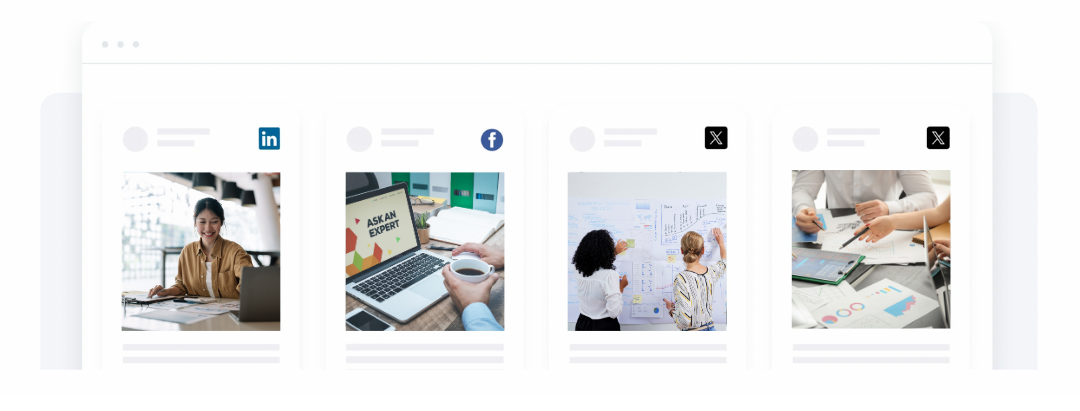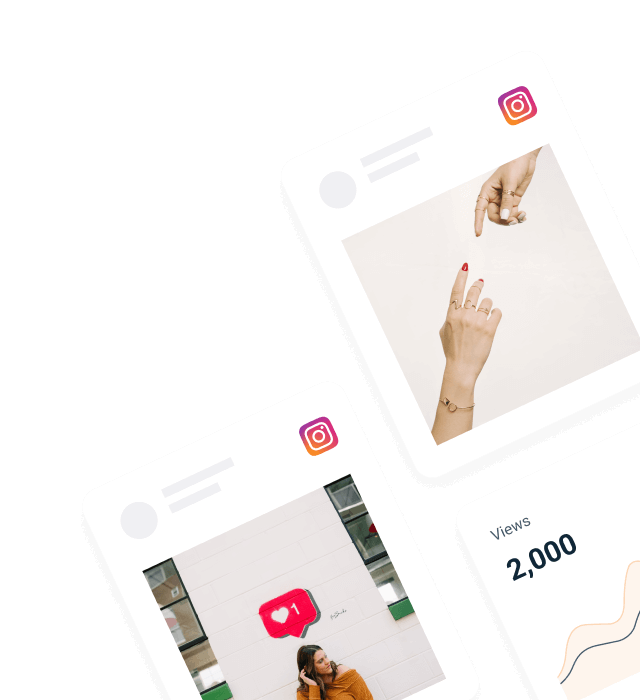In today’s digital-first world, 90% of employers now consider social media important when evaluating candidates, yet only 73% of small businesses currently own a website. A well-crafted personal website is no longer optional—it’s a powerful tool to set yourself apart in competitive industries. Unlike social media, which limits creative freedom and quickly buries your content, your website gives you complete ownership of your professional brand and online identity.
Whether you’re a freelancer building an online presence, a job seeker aiming to stand out, an entrepreneur, or an established professional, the structure of your site makes a lasting impression. The real question isn’t just why you need one, but what pages should I have on my personal website to make it effective. Even a simple site, when built thoughtfully, becomes a strong foundation for your long-term success.
This comprehensive guide will help you understand what pages a website should have, offering practical advice and proven tips to ensure your personal website truly works for you.
What Are Personal Websites?
A personal website informs the world about who you are, what you do, and why someone should hire you. Nowadays, these websites are sophisticated professional tools that merge portfolio, resume, and marketing platform into a single location.
Personal websites are powerful branding machines. They offer complete creative control over your content, design, and message, something you can never achieve on social media platforms with their restrictive templates and algorithm uncertainty. Your personal website is your professional headquarters, where you showcase your expertise and share your story.
The single most significant difference between your site and social media websites is one of control and ownership. Social media platforms can change rules, suspend your account, or even shut down altogether. However, your website is controlled, providing a firm foundation for your online identity that grows with your career.

Why You Need a Personal Website
A personal website has numerous benefits that can boost your career and business opportunities:
Professional Credibility and Trust
A professional site instantly conveys credibility and indicates that you’re serious about your profession. It illustrates technical proficiency and attention to detail, attributes respected in every industry.
Complete Brand Control
Unlike social media platforms, your website allows unlimited customization. You control the design, content, user experience, and visitors’ interaction with your brand.
Improved SEO and Discoverability
Personal sites appear in search engine listings when individuals search for your name or specialty. This organic visibility can lead to unforeseen possibilities and collaborations.
Centralized Portfolio Platform
Your site is a central destination for all your work, accomplishments, and professional material. Your visitors can view your whole professional narrative in a single place.
Networking and Opportunity Generation
A good website draws in opportunities that you would not have otherwise encountered. Clients, employers, and collaborators can find and contact you directly.
Enhanced SEO and Discoverability
Personal websites appear in search engine results when people search for your name or expertise. This organic visibility can lead to unexpected opportunities and partnerships.
Centralized Portfolio Platform
Your website is a central hub for all your work, achievements, and professional content. Visitors can explore your entire professional story in one location.
Networking and Opportunity Generation
A well-designed website attracts opportunities you might never have found otherwise. Clients, employers, and collaborators can discover and contact you directly.
Long-term Career Investment
Your website grows with your career, becoming more valuable as you add content, build authority, and strengthen your online presence.
What Pages Should I Have on My Personal Website?
Wondering what pages should I have on my personal website? Your website should include essential sections such as a homepage, about page, portfolio, resume, and contact form. Incorporating these pages helps enhance your personal branding, improve SEO visibility, and makes it easier for employers, clients, and collaborators to connect with you.
Essential Pages Every Personal Website Must Have
Homepage: Your Digital Front Door
Your homepage is the first impression most visitors get, so it is the most critical page of your personal website. This page must immediately reveal who you are, what you do, and why visitors should care—in the first few seconds of their visit.
Some of the most essential elements of a strong home page are a concise headline that declares your professional value proposition, a professional photo that establishes trust and rapport, and a short overview of your specialty and differentiators. Since your home page is likely your main landing page, incorporate strong calls-to-action that direct visitors to your most significant content, such as your portfolio, contact details, or recent blog articles. The top personal websites have home page designs that convey value instantly while inviting site visitors to delve in deeper. Research excellent personal website examples to see how successful professionals organize their home page content for maximum effect.
Keep your homepage uncluttered and easy to read, with distinct sections that allow visitors to view what you do at a glance. Use size and position to emphasize the most significant areas, and ensure that your navigation menu is prominent and simple to use.
About Page: Your Professional Story
The About page is the second most viewed page on personal websites, which is why it is crucial for better connecting with your audience. This page needs to tell your professional tale engagingly, revealing your background, expertise, and personality.
Tell us about your professional history, highlighting the major milestones, accomplishments, and experiences that influenced your career. Mention your education, certifications, and significant achievements, but instead of merely listing these credentials, concentrate on the story behind them.
Personal anecdotes that reveal your personality and values allow guests to relate to you on a human level, regardless of whether you’re a developer, designer, consultant, or other professional. Think about sharing defining moments that brought you to where you are today, obstacles you’ve faced, or the “why” of your work. For instance, talk about what drove you to pursue graphic design, how you overcame one tough challenge, or what fuels your passion for your industry. These genuine personal details render your professional narrative relatable and memorable.
Use this page to build your credibility and expertise while still being honest and relatable in tone. Add a professional photo and think about including quotes or testimonials that reflect your reputation and knowledge.
Portfolio/Work Examples Page
Your portfolio page highlights your finest work and presents your abilities to future clients or employers. The page should include 3-6 of your most compelling projects or accomplishments, along with thorough explanations of your role, the problems you resolved, and the outcomes you attained.
For every portfolio piece, incorporate visual materials such as images, graphs, or screenshots that assist in narrating the story. Give background information on the project objectives, your role specifically, and quantifiable results where possible. This makes it easier for visitors to comprehend what you have done and how you work and think.
Structure your portfolio to show your most applicable work first, based on your target audience’s needs and interests. Updating regularly makes this page dynamic and shows continued professional development.
Contact Page: Building Professional Connections
Your contact page enables valuable connections with potential customers, employers, and collaborators. Instead of merely providing contact details, design a page that invites interaction and makes it convenient for people to get in touch.
List several methods of contact, including email, professional social media accounts, and location, if applicable. A contact form will limit spam while allowing legitimate inquiries to reach you easily. You might include your availability, response time, and how you prefer to be contacted for various inquiries.
For greater credibility and social proof, look for ways to incorporate dynamic content that reflects your ongoing professional activity. Your contact page should serve as a professional portal that welcomes serious connections and screens out unqualified contacts.
Begin by listing several contact methods that reflect your professional level. Email is still the most professional default contact method. Still, you may want to list phone numbers for emergency situations and direct URLs to your LinkedIn profile for networking. Your contact form should be professional enough to glean necessary information without being cumbersome to use—ask for the visitor’s name, email, project type, and message to help you sort responses efficiently.
Having clear expectations for response time is a sign of professionalism and sets visitor expectations properly. A simple “I answer all inquiries within 24-48 hours” creates a sense of trust and indicates you’re on top of your business communications. Add your business address if location is relevant to your services, and mention any professional certifications or credentials that support your expertise. Your preferred way of communication is highly vital in establishing effective work relationships. Inform people how you would want to be communicated with for various questions, such as via email for project inquiries and your contact form for simple questions. Services such as Juicer can display your recent social media posts on this page, revealing your expertise and thoughts on various platforms in real-time, making it more dynamic than static contact info.
Your contact page should also provide pertinent geographic information if you operate locally, and state your professional availability and communication channels of choice. This holistic strategy converts your contact page from merely a form to a professional communication portal that enhances credibility while simplifying your client onboarding process.
Resume/CV Page
A dedicated resume page allows visitors to view your professional experience in a traditional format while using the web’s interactive capabilities. Unlike a PDF resume, your web-based version can include links to projects, multimedia content, and dynamic updates.
Make your resume easy to read by dividing it into sections for experience, education, skills, and achievements. Add links to projects in your portfolio, including outside proof like LinkedIn recommendations or published work. This way of organizing helps people learn more about your background than a traditional resume does.
Consider providing visitors with a PDF copy to download if they prefer conventional formats, but make your web resume the primary and most current edition of your work experience.
Page Priority Comparison
Understanding which pages to prioritize can help you build your website strategically, especially if you’re working with limited time or resources:
| Page Type | Priority Level | Purpose | Best For | Time Investment |
|---|---|---|---|---|
| Homepage | Essential | First impression, navigation hub | All professionals | High |
| About Page | Essential | Personal connection, credibility | All professionals | Medium |
| Contact Page | Essential | Professional communication | All professionals | Low |
| Portfolio/Work | Essential | Showcase capabilities | Creative professionals, consultants | High |
| Resume/CV | Essential | Professional background | Job seekers, career changers | Medium |
| Blog/Insights | Optional | Thought leadership, SEO | Content creators, consultants | High |
| Testimonials | Optional | Social proof, credibility | Service providers, freelancers | Medium |
| Services | Optional | Business development | Consultants, service providers | Medium |
| Resources | Optional | Lead generation, value-add | Educators, consultants | High |
| Media/Press | Optional | Third-party validation | Public figures, speakers | Low |
Optional Pages That Add Value
In addition to the significant pages, some additional features can enhance your personal website’s functionality and provide extra value to your visitors.
Blog/Insights Section Blog/Insights Section
A personal blog showcases your expertise and thought leadership and enhances your website’s SEO performance. Publish industry insights, project case studies, lessons learned, and professional observations through frequent blog entries. An actively maintained personal blog indicates you’re involved in your industry and helps to establish authority. Your blog posts connect to your professional brand and reinforce your website objectives. Regular blog entries make your site rank higher in search engines and offer quality content that engages site visitors and keeps them coming back for more insights.
Testimonials and Recommendations
Committed testimonials demonstrate social proof and establish credibility. Feature quotes from clients, supervisors, colleagues, or collaborators that reflect your professional qualities and skills. Video testimonials, where possible, can be compelling.
Great social proof goes beyond testimonials. Consider highlighting specific results you achieved for clients, before-and-after comparisons of projects, or utilizing case studies that demonstrate your impact. Visual proof, such as screenshots of positive feedback or social media mentions, can be highly effective for creative professionals such as designers and developers. You may also drop names of significant clients, publications you’ve been mentioned in, or industry awards to establish greater credibility and professional stature.
Services or Offerings Page
If you offer consulting, freelance services, or products, a dedicated services page indicates what you do, how you do it, and how much you charge. This makes it clear to potential clients how to engage your services.
Media Mentions and Press
A press page that spotlights media appearances, interviews, publications, or speaking engagements creates third-party credibility and illustrates industry recognition.
Resources and Downloads: Provide helpful resources such as templates, guides, or tools within your area of expertise. This technique creates goodwill, showcases your expertise, and can lead to leads for your services.

Step-by-Step Guide to Building Your Website
Step 1: Identify Your Purpose and Objectives
Before creating any content, define clearly what you wish your website to accomplish. Are you seeking employment, establishing a consulting practice, positioning yourself as a thought leader in your industry, or showcasing your artistic projects? Whether building your first website or redesigning an existing site, your objectives will inform your content strategy, design decisions, and essential features.
Define your target audience and learn their needs, pain points, and inclinations. A site for prospective employers will differ from one for consulting clients or creative collaborators. This audience insight informs your message, voice, and content structure for all your key pages.
Step 2: Choose Your Platform and Tools
Choose a website-building platform that is suited to your technical abilities and needs. When comparing website builders, look for customization possibilities, hosting performance, mobile responsiveness, and long-term scalability. Some of the most popular website builders are WordPress, Squarespace, Wix, and Webflow, providing varying degrees of flexibility and usability.
Contemporary website builders have transformed how professionals establish their online presence by making it achievable to launch advanced websites without coding skills. The top website builders provide drag-and-drop functionality, professional templates, and SEO tools built into their platforms to enable your website to gain more site traffic from search engines.
Assess hosting services for performance, security, and quality of support. Your domain name must be professional and preferably contain your name for consistency in personal branding.
Step 3: Create Your Content Strategy
Plan your content systematically, starting with your core pages and expanding to optional sections based on your goals. Develop a consistent brand voice that reflects your personality while maintaining professionalism appropriate for your industry. Make a plan for when to post things like blogs or news updates. Regularly publishing helps your audience know what to expect and improves your SEO.
Step 4: Design and Build Your Pages
Prioritize user experience design that organically leads visitors through your content, whether designing a basic one-page format or an in-depth multi-section website. If you’ve just begun constructing your first website, start with a basic strategy: select a minimal template, prioritize your key pages (homepage, about, contact), and incorporate more advanced elements as you become more confident. Leverage visual hierarchy, white space, and concise navigation to craft an intuitive browsing experience. Ensure your design represents your personal brand while being professional and accessible.
Optimize page load times and mobile responsiveness on all devices. Check your website on other screen sizes and web browsers to ensure proper operation.
Step 5: Merge Social Media and Dynamic Content
Strategically link your social media pages to your site, showcasing your professional activity. Instead of using standard embedded feeds that appear messy and unprofessional, look for solutions that showcase and display your social content tastefully.
Juicer offers superior social media integration to basic platform widgets, allowing you to combine content from multiple social platforms into a clean, professional display. This approach showcases your active professional engagement while maintaining your website’s aesthetic quality. Juicer’s moderation and filtering tools ensure only your approved content appears on your professional site.

Step 6: Search Engine Optimization
Apply search engine optimization SEO best practices to make your website more discoverable by search engines. Naturally insert relevant keywords into your content, optimize page titles and descriptions, and internally link between several pages. Prioritize offering valuable content that responds to questions your target audience may have. Good SEO makes your personal website visible in Google search results when potential employers or clients are searching for professionals with your expertise and skills.
Provide quick load times, mobile-first design, and correct technical SEO setup. Register your sitemap with Google Search Console and local SEO if applicable to your professional endeavors.
Step 7: Start and Share
Before launch, thoroughly test all functionality, links, and forms to ensure content is explicit, accurate, and professional. Ask trusted colleagues to visit your site and offer feedback.
Market your new site via your current networks, email signature, business cards, and social media accounts. Put your website address on all professional materials and correspondence.
Design and Technical Best Practices
An effective personal website design balances professionalism and personality, developing a memorable experience that reflects your personal brand. Start with a mobile-first design. Ensure your site appears and functions well on mobile phones before enhancing it for larger screens.
Put loading speed first by compressing images, selecting fast hosting, and limiting unnecessary plugins or functionality. Visitors expect pages to load within 3 seconds, and slower websites can have a considerable effect on user experience and search rankings.
Make navigation simple so that visitors can locate key information quickly. Clear menu titles, a logical page order, and consistent site design elements will help. Your navigation should assist the visitor in answering the question, “Where do I go to find more of what I need?”
Select fonts and colors that reflect your professional brand, are clear to read, and adhere to accessibility guidelines. In selecting your colors, consider 2-3 core colors that reflect who you are and what you do. For instance, developers and designers tend to use bold, creative colors, whereas consultants may prefer more subdued, soft colors. Your colors should assist individuals in recognizing what is key, guide their attention to critical areas, and remain consistent across all pages.
Utilize high-quality, professional photographs that reflect your brand rather than generic stock photos that anyone else could utilize. Consider creating a basic guide for your visuals that includes your chosen fonts, color hex codes, and image style decisions to ensure consistency as your site expands.
Common Mistakes to Avoid
Several common mistakes can undermine your personal website’s effectiveness and professional impact:
Excessive Navigation Complicated menu systems bewilder visitors and obscure your strongest content. Make navigation intuitive and straightforward, prioritizing the most significant pages your visitors require.
Poor-quality images, Poor-quality, dark, or amateurish images damage your credibility immediately. Invest in good photography or learn basic photo editing so that all images contribute to your professional image.
Outdated Information: Stale content implies you’re not involved in your field. Regular updates, even minor ones, keep your site fresh and show continued professional activity.
Lacking Contact Methods: If it is difficult for individuals to contact you, then having a professional website is pointless. Provide clear and various methods of contacting you that are appropriate for your occupation.
Inconsistent Branding: Different fonts, colors, and messages confuse and make it difficult to discern your professional brand. Make everything the same on every page and section.
Your visitors must be informed about what you would like them to do. This may be contacting you, viewing your portfolio, or printing your resume.
Personal Website Examples and Inspiration
Effective personal sites share standard attributes and reflect the owner’s professional character. Portfolio-centered sites are highly suitable for graphic designers, web designers, photographers, and other visual artists who must present their work immediately. Such sites should feature prominent, high-quality project galleries, case studies with before-and-after comparisons, and clear presentations of technical proficiency and creative processes.
For developers and designers, particularly, think about adding interactivity, code snippets, or live project URLs that showcase your aesthetic eye and technical skills. If you are a web designer, freelance writer, or consultant, your portfolio site must express your selling proposition and engage prospective customers with strong work examples. Content-heavy blogs are ideal for consultants, writers, and thought leaders who establish authority by dispensing knowledge and know-how.
The most effective personal websites convey a straightforward professional narrative across all pages, with each section supporting the overall message. They balance personality and professionalism, revealing the right amount of personal touch to engage individuals while maintaining appropriate professional boundaries.
Check out the top personal websites within your industry to learn what is standard and how you can be different. Observe how successful individuals structure their information, present their expertise, and invite visitors to interact meaningfully. Top personal websites illustrate how to combine professionalism with personality, creating search engine-friendly sites and engaging visitors. View website samples of individuals in your profession to identify design trends and content approaches that resonate with your audience.
Conclusion and Next Steps
A properly structured personal website with the correct pages can change your professional prospects and career path. The must-have pages, home page, about, portfolio, contact, and resume, are the backbone of your online presence, and additional optional elements such as blogs, testimonials, and resource pages can help boost your brand. Excellent personal website examples illustrate how these components interact to develop engaging online experiences that draw in website visitors and turn them into happy clients or business contacts.
Establish your key pages with quality content that best reflects your professional abilities and personality. Prioritize delivering value to your audience and concisely conveying your unique professional competencies.
As you build your website, remember that tools such as Juicer can enhance how you integrate social media into your site, making your site more professional and engaging for your readers. Investing in good tools and thoughtful design pays off in the career opportunities your website opens up.
Your website is a long-term career investment that increases in value as you publish content, develop authority, and enhance your professional brand. Begin building today, and you’ll have an effective tool for your career 24/7.
Ready to take your website to the next level? Explore how Juicer can transform your social media presence into professional social proof that converts visitors into opportunities. Sign up now for free.




